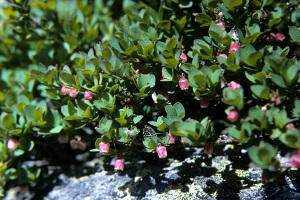Vaccinium uliginosum berries are edible and sweet when ripe. Vaccinium uliginosum is native to the U.S. and is in the Ericaceae (Heath Family).
Photo Credit: © R.A. Howard, Courtesy of Smithsonian Institution.
Vaccinium uliginosum
Common Name: bog blueberry
Plant Functional Group: Deciduous broadleaf
Class > Order > Family: Magnoliopsida > Ericales > Ericaceae
